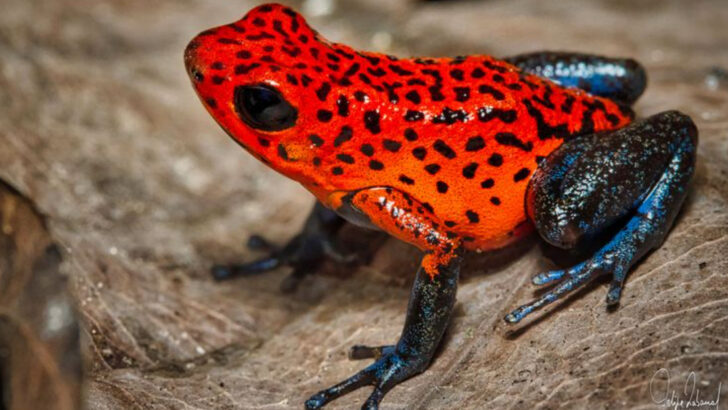Some frogs are so flashy, it’s like nature handed them a neon paintbrush and said, “Go wild.” But those dazzling colors aren’t just for show. They’re screaming a warning. These amphibians don’t rely on camouflage—they strut through the jungle in bright blues, blazing oranges, and electric greens. And if you think they’re defenseless just because they’re small, think again. Behind those bold looks are tricks that range from toxic skin to surprise attacks you’d never expect from a frog. You’re about to meet 12 frogs that look like highlighters and act like little warriors. Colorful, clever, and anything but ordinary.
Poison Dart Frog
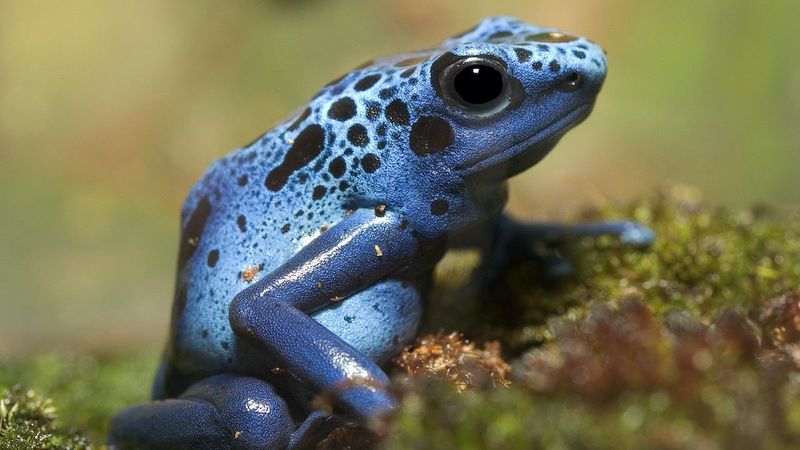
Poison Dart Frogs boast electrifying colors like blue, yellow, and green. These small amphibians use their bright hues as a warning signal to predators. Their skin secretes potent toxins that can paralyze or even kill, which native tribes historically used for hunting.
In the dense rainforests of Central and South America, these frogs play a crucial ecological role. Despite their intimidating defenses, they are non-aggressive and mind their own business.
With a body the size of a fingernail, their vibrant appearance and lethal defense make them a subject of endless fascination.
Red-eyed Tree Frog
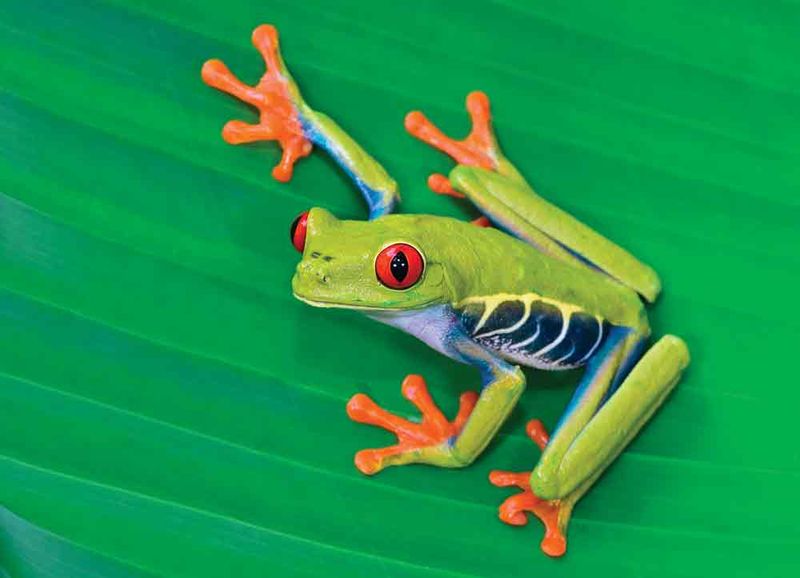
The Red-eyed Tree Frog is a nocturnal marvel with dazzling red eyes that startle predators away. Its bright green body, accented by blue and yellow stripes on its sides, helps it blend into the foliage during the day.
At night, these frogs become active, leaping between leaves in search of food. Their sticky pads allow them to cling effortlessly to the vegetation.
Though they lack the poisonous defenses of some of their relatives, their sudden appearance with those scarlet eyes is enough to deter many threats.
Golden Mantella
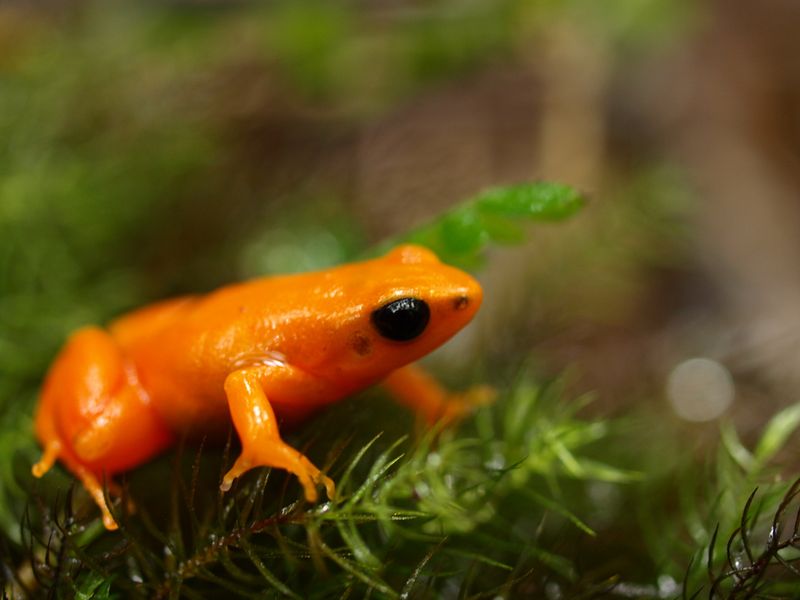
The Golden Mantella, native to Madagascar, stuns with its vivid orange-yellow skin. Despite its small size, this frog’s color signals danger to potential predators.
Its skin contains alkaloids that make it a distasteful meal, though not deadly. These frogs inhabit moist areas near streams, hiding among the leaf litter.
Conservation efforts are crucial, as habitat loss threatens their survival. Their striking appearance and unique ecological niche make them a gem in Madagascar’s biodiversity.
Strawberry Poison Dart Frog
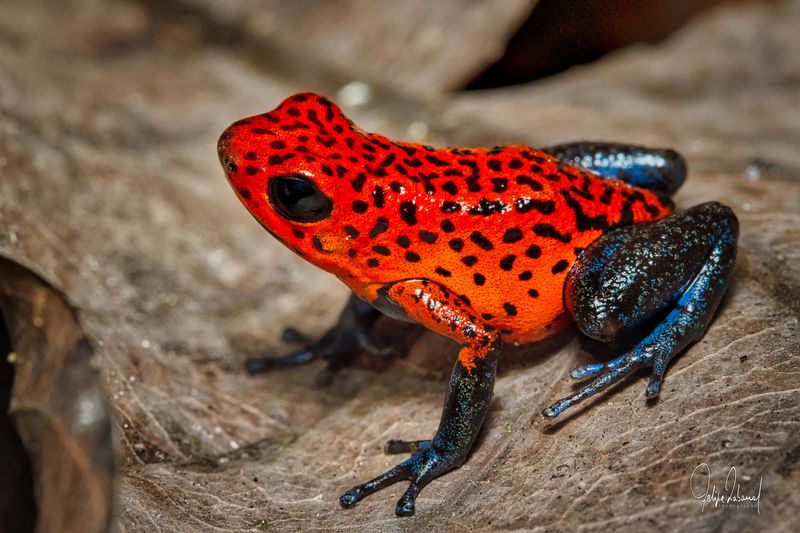
The Strawberry Poison Dart Frog is not just a visual delight but also a master of toxins. Its bright red body and contrasting blue legs are a vivid warning sign. These frogs produce batrachotoxins, potent enough to deter any predator.
Found in Central America, they play an essential role in controlling insect populations. Their parental care is unique, with males guarding eggs and females transporting tadpoles to water-filled bromeliads.
Their striking coloration and fascinating behavior make them a subject of interest for herpetologists and enthusiasts alike.
Amazon Milk Frog
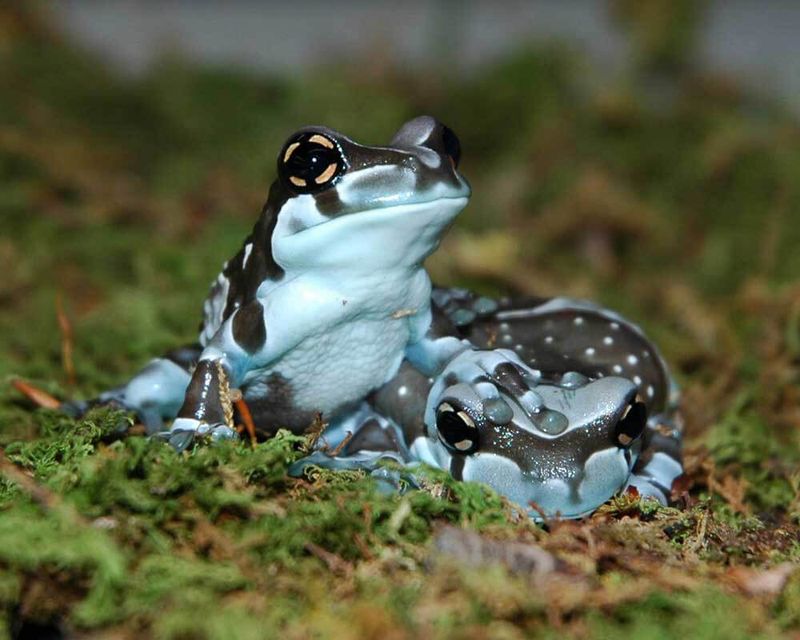
The Amazon Milk Frog, named after the milky secretion it produces when threatened, is a tree-dwelling wonder. Its pale blue skin with brown banding provides camouflage among the bark and leaves.
These frogs are known for their calm demeanor and distinctive call. Residing high in the canopy, they are an essential part of the Amazon’s ecosystem.
Despite their defensive slime, they are not toxic to humans. Their unique appearance and arboreal lifestyle capture the imagination of many nature lovers.
Harlequin Frog
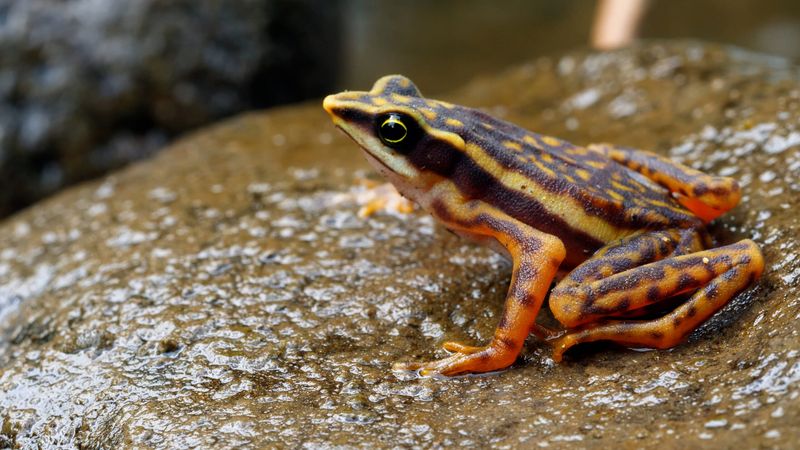
The Harlequin Frog, often dressed in vivid yellows and blacks, uses its bold patterns to ward off potential threats. These frogs inhabit cloud forests, where they play a vital role in the local ecology.
Their skin secretes toxins, making them unpalatable to predators. Interestingly, they are often a subject of research to discover new pharmaceutical compounds.
Unfortunately, many Harlequin Frog species are endangered due to habitat destruction and disease. Their eye-catching patterns and ecological importance highlight the need for conservation.
Crowned Tree Frog
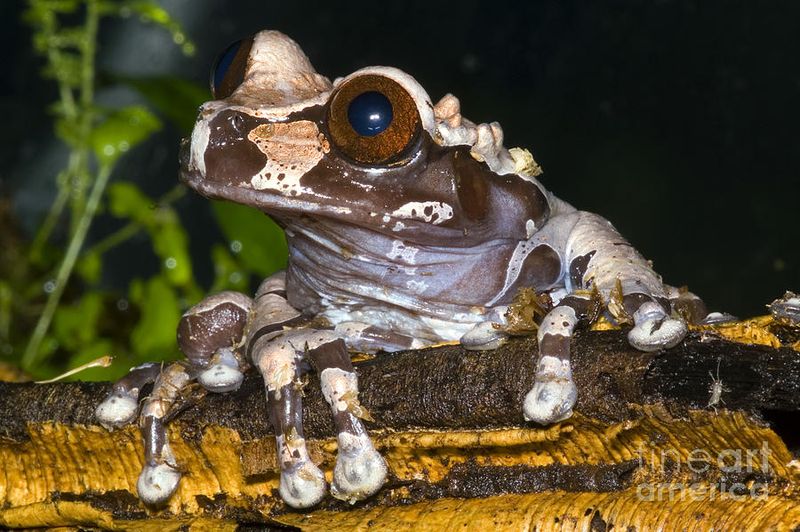
The Crowned Tree Frog, with its unique crown-like markings, is a master of disguise. Its brown and green tones allow it to blend seamlessly into its arboreal habitat.
When threatened, it puffs up its body to appear larger, deterring predators. Found in Central and South America, these frogs are known for their loud, resonating calls.
Their intriguing appearance and defensive tactics contribute to their mystique, attracting both scientists and nature watchers.
Yellow-banded Poison Dart Frog
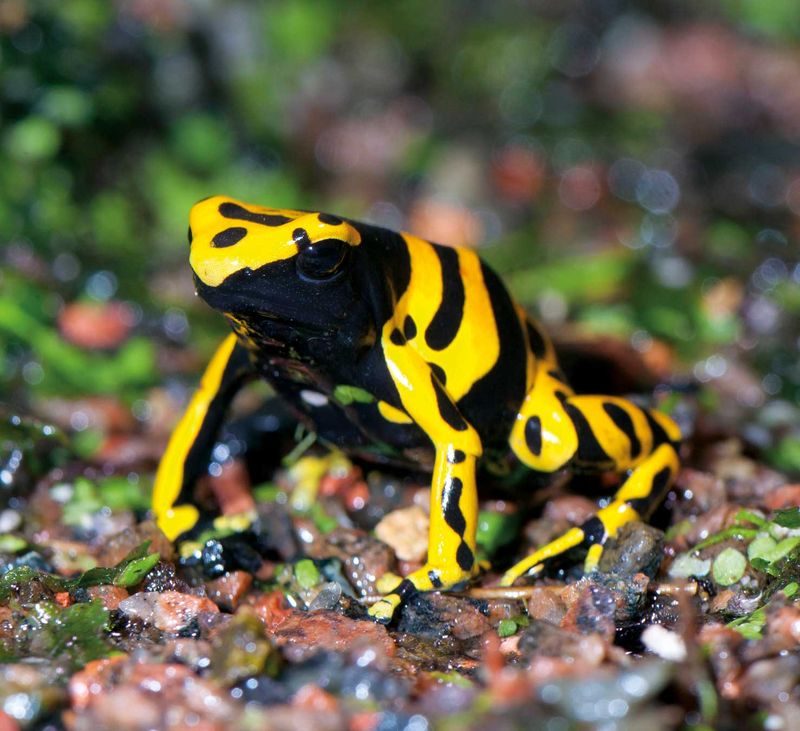
The Yellow-banded Poison Dart Frog is a striking amalgam of black and bright yellow bands. This vivid coloration serves as a stark warning to potential threats.
Their skin contains alkaloids that can cause serious harm, deterring predators from making them a meal. Found in northern South America, they are essential in maintaining the balance of the ecosystem.
Their contrasting colors and potent defense make them a subject of ongoing fascination and study.
Green and Black Poison Dart Frog
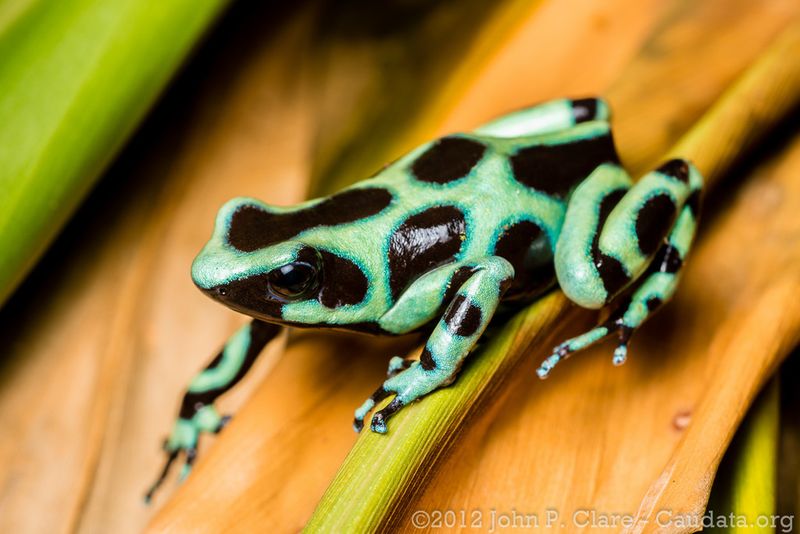
The Green and Black Poison Dart Frog boasts a mesmerizing blend of emerald green and black patterns. This striking color combination signals danger to predators.
Native to Central America, their skin produces toxins that deter predators and ensure their survival. Despite their small size, they are mighty defenders of their territory.
Their vivid patterns and potent defense continue to captivate researchers and nature enthusiasts alike.
Bumblebee Poison Dart Frog

The Bumblebee Poison Dart Frog, with its yellow and black stripes, resembles the insect it’s named after. This bold pattern is a visual deterrent to would-be predators.
Their skin secretes toxins that can incapacitate predators, making them formidable despite their small stature. Native to Venezuela’s rainforests, they contribute to insect population control.
Their striking appearance and unique ecological role make them a favorite subject for researchers and hobbyists.
Purple Harlequin Toad
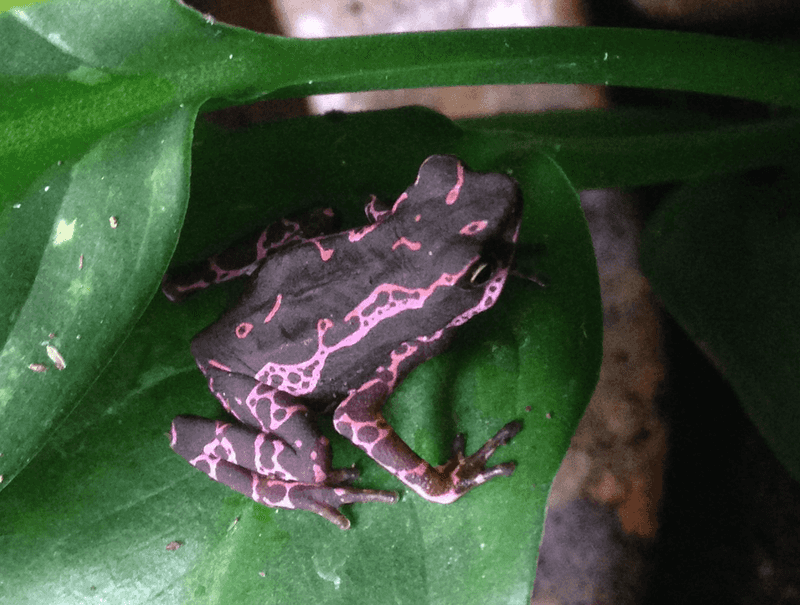
The Purple Harlequin Toad, with its vibrant purple skin adorned with yellow markings, is a rare spectacle. These toads use their vivid colors to warn predators of their toxic nature.
Found in the cloud forests, they are a critical part of their ecosystem, preying on insects and maintaining balance. Conservation efforts are vital, as habitat loss threatens their existence.
Their unique coloration and ecological role make them a fascinating study for conservationists.
Splendid Leaf Frog
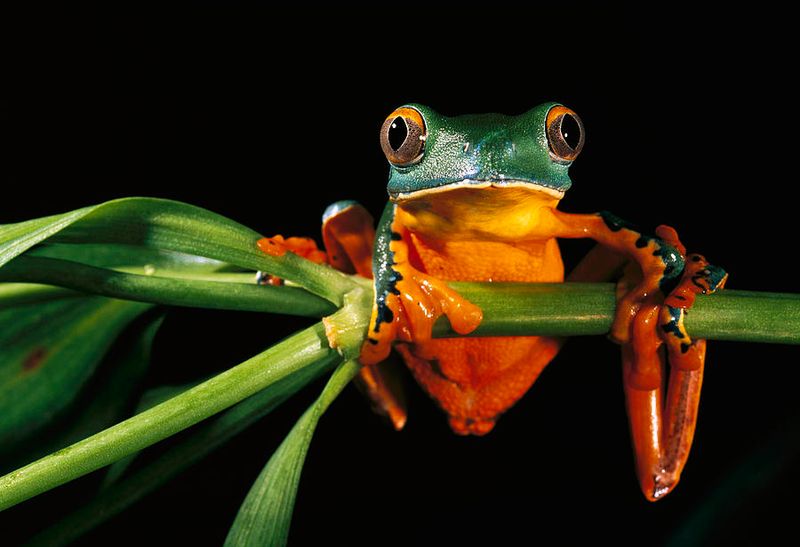
The Splendid Leaf Frog is a vision with its neon green skin and striking red eyes. Its ability to blend into the foliage during the day is remarkable.
At night, it becomes active, navigating the rainforest canopy in search of insects. Despite its vivid appearance, it relies on stealth and camouflage for protection.
Their captivating appearance and nocturnal habits make them a marvel for anyone lucky enough to spot them.

